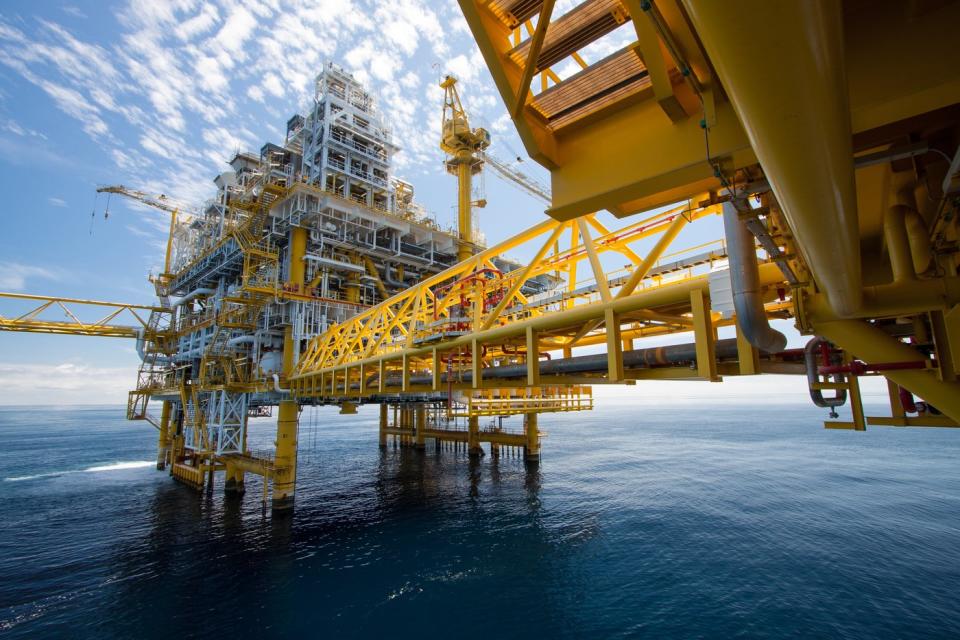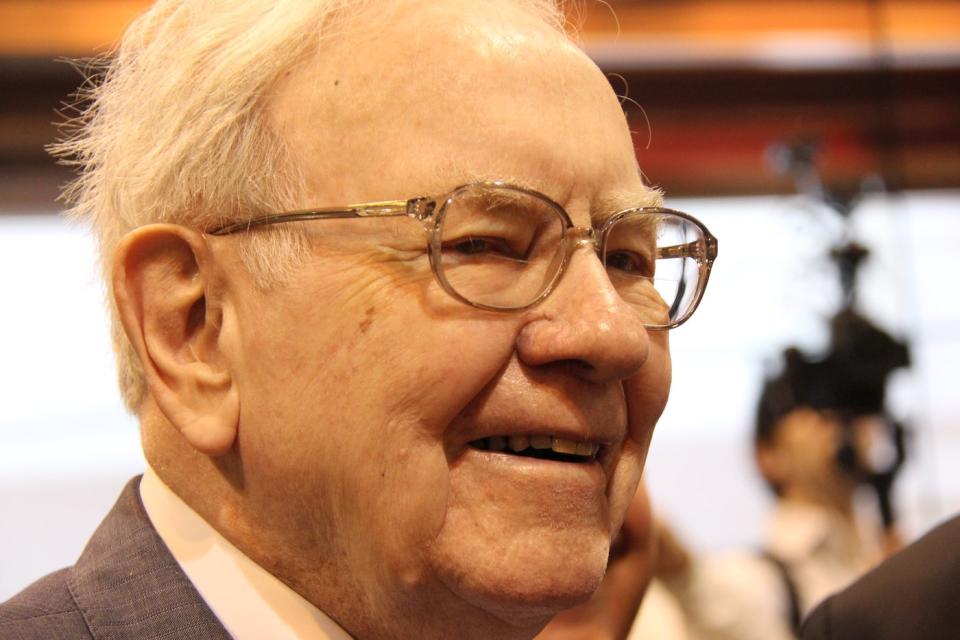If you’ve ever wondered why Berkshire Hathaway (NYSE: BRK.A)(NYSE: BRK.B) CEO Warren Buffett draws in the neighborhood of 40,000 investors to his company’s shareholder meeting each year, look no further than his track record. Since taking over the CEO role in the mid-1960s, the “Oracle of Omaha” has overseen a nearly 4,964,000% return in his company’s Class A shares (BRK.A), which compares quite favorably to the roughly 36,000% total return, including dividends paid, for the broad-based S&P 500 over the same span.
For nearly six decades, Buffett and his top-notch investment team have had a knack for picking out time-tested bargains hiding in plain sight.
At the moment, Berkshire has stakes in 44 stocks and two exchange-traded funds spanning $388 billion of invested assets. But among these holdings are three Warren Buffett stocks that represent screaming buys for the second half of 2024, and likely well beyond.
Amazon
The first Warren Buffett stock that stands out for all the right reasons for the second half of 2024 and well beyond is e-commerce leader Amazon (NASDAQ: AMZN).
The knock against Amazon has always been its relatively “expensive” valuation, at least when using traditional fundamental metrics, such as the price-to-earnings (P/E) ratio. While the time-tested P/E ratio works great when attempting to value mature businesses, this go-to metric tends to come up short when analyzing fast-growing companies that are regularly reinvesting their cash flow back into their operations.
Chances are that you’re familiar with Amazon because of its superior e-commerce platform. In 2023, Amazon is estimated to have garnered a nearly 38% share of U.S. online retail sales. While this would, in theory, expose the company to weakness if the U.S. or global economy were to fall into a recession, the important thing to recognize about Amazon is that its operating cash flow and income almost exclusively originate from its faster-growing ancillary operations.
For investors, nothing is more important than Amazon Web Services (AWS). AWS is the world’s leading cloud infrastructure service platform, and it recently surpassed $100 billion in annualized run-rate sales. What’s noteworthy about this psychological run-rate revenue milestone is that businesses are still in the relatively early stages of ramping up their cloud-service spending. Since cloud-service margins are considerably juicier than the margins associated with online retail sales, AWS is typically responsible for 50% to 100% of Amazon’s operating income.
Beyond AWS, Amazon is also relying on advertising services and subscription services to do some heavy lifting. Amazon draws around 2.5 billion unique visitors to its site each month, which is more than eyeballs enough to attract advertisers.
Meanwhile, the company surpassed 200 million global Prime subscribers in April 2021 and has likely added to this total as its content library and e-commerce platform have grown. Like AWS, advertising services and subscription services offer sustained double-digit sales growth.
Despite recently hitting a new all-time high, Amazon is historically cheap relative to cash flow projections. Throughout the 2010s, investors regularly paid 23 to 37 times year-end cash flow to own shares of Amazon. You can buy shares right now for about 13 times estimated cash flow per share in 2025.

Chevron
A second no-brainer Warren Buffett stock that’s begging to be bought for the second half of 2024 (and beyond) is global energy giant Chevron (NYSE: CVX).
The clearest headwind current and prospective Chevron shareholders have to contend with is the prospect of a recession taking shape in the U.S. or abroad. Oil and gas stocks tend to ebb-and-flow with the spot price of crude oil and natural gas. During periods of economic weakness, it’s not uncommon for commodity-driven companies to struggle.
The good news for Chevron is that macro factors are decisively working in its favor. Even with select predictive indicators cautioning of a coming recession — e.g., the first drop off in U.S. M2 money supply since the Great Depression — the U.S. economy has remained resilient.
To add to this point, the unprecedented demand uncertainty associated with the COVID-19 pandemic led global energy majors (including Chevron) to scale back their capital expenditures (capex) for a good three years. Even with capex ramping back up, the global supply of crude oil has been constrained. When the supply of an in-demand good is tight, it tends to have a positive effect on the spot price of that good. In simpler terms, it’s buoying the price of oil, which in turn is generating more operating cash flow for Chevron’s drilling segment.
Perhaps one of the biggest catalysts for the second half of 2024 and into 2025 is Chevron’s pending deal to acquire Hess in an all-share transaction valued at $53 billion. If this buyout gets the green light from regulators, Chevron is going to add 465,000 net acres in the oil-rich Bakken Shale, as well as meaningfully increase its oil-equivalent exposure in Guyana. If the price of oil remains elevated, it makes this deal all the sweeter.
Although drilling is where Chevron derives its best margins, don’t overlook that it’s also an integrated operator. The company’s transmission pipelines, refineries, and chemical plants act as a hedge in the event that the spot price of crude oil declines. The steady operating cash flow from these ancillary operating segments has played a key role in Chevron being able to increase its base annual dividend for 37 consecutive years.
The icing on the cake is that Chevron’s stock is, also, historically inexpensive. Shares can be grabbed right now for less than 11 times forward-year earnings, which represents a 23% discount to its average forward-year multiple over the trailing-five-year period.
Coca-Cola
The third Warren Buffett stock that’s a screaming buy for the second half of 2024, and likely well beyond, is beverage behemoth Coca-Cola (NYSE: KO).
Whereas an economic downturn is arguably the biggest enemy for Amazon and Chevron, the prospect of above-average inflation is typically viewed as the most front-and-center headwind for consumer staples companies. When the price of goods and services is rising at an above-average rate, there’s always a concern that consumers may be forced to pare back their spending.
The good news for Coca-Cola is that it provides a basic necessity product. Regardless of what’s happening with the U.S. economy or Wall Street, consumers are still going to purchase beverages. Given the company’s strong branding, Coca-Cola rarely has any trouble increasing its prices to offset rising expenses.
Speaking of strong branding, Coca-Cola was named the “most-chosen brand” by consumers for a 12th straight year in Kantar’s latest “Brand Footprint” report. This dominance is a reflection of Coca-Cola’s top-tier marketing campaign, which involves using digital channels and artificial intelligence (AI) to reach younger audiences, while leaning on more than a century of history and well-known brand ambassadors to connect with its mature consumers.
From an operating perspective, Coca-Cola is firing on all cylinders. Although it’s not the growth story it once was, it has the right puzzle pieces in place to deliver consistent mid-single-digit sales and earnings growth. It has more than two dozen brands generating at least $1 billion in annual sales, and is operating in all but three countries (Cuba, North Korea, and Russia). This gives Coca-Cola a steady stream of predictable cash flow in developed countries, and needle-moving organic growth potential in emerging markets.
Coca-Cola is also known for its top-tier capital-return program. In February, the company increased its quarterly dividend by 5.4%, which marked the 62nd consecutive year it’s lifted its payout. Berkshire Hathaway is generating a roughly 60% annual yield relative to its cost basis in Coca-Cola stock.
Lastly — and to stay on theme — the valuation makes sense. Coca-Cola’s forward P/E ratio of 21 is roughly 10% below its average forward-year earnings multiple over the last five years.
Should you invest $1,000 in Amazon right now?
Before you buy stock in Amazon, consider this:
The Motley Fool Stock Advisor analyst team just identified what they believe are the 10 best stocks for investors to buy now… and Amazon wasn’t one of them. The 10 stocks that made the cut could produce monster returns in the coming years.
Consider when Nvidia made this list on April 15, 2005… if you invested $1,000 at the time of our recommendation, you’d have $757,001!*
Stock Advisor provides investors with an easy-to-follow blueprint for success, including guidance on building a portfolio, regular updates from analysts, and two new stock picks each month. The Stock Advisor service has more than quadrupled the return of S&P 500 since 2002*.
See the 10 stocks »
*Stock Advisor returns as of June 24, 2024
John Mackey, former CEO of Whole Foods Market, an Amazon subsidiary, is a member of The Motley Fool’s board of directors. Sean Williams has positions in Amazon. The Motley Fool has positions in and recommends Amazon, Berkshire Hathaway, and Chevron. The Motley Fool has a disclosure policy.
3 Warren Buffett Stocks That Are Screaming Buys for the Second Half of 2024 (and Beyond) was originally published by The Motley Fool
Credit: Source link




